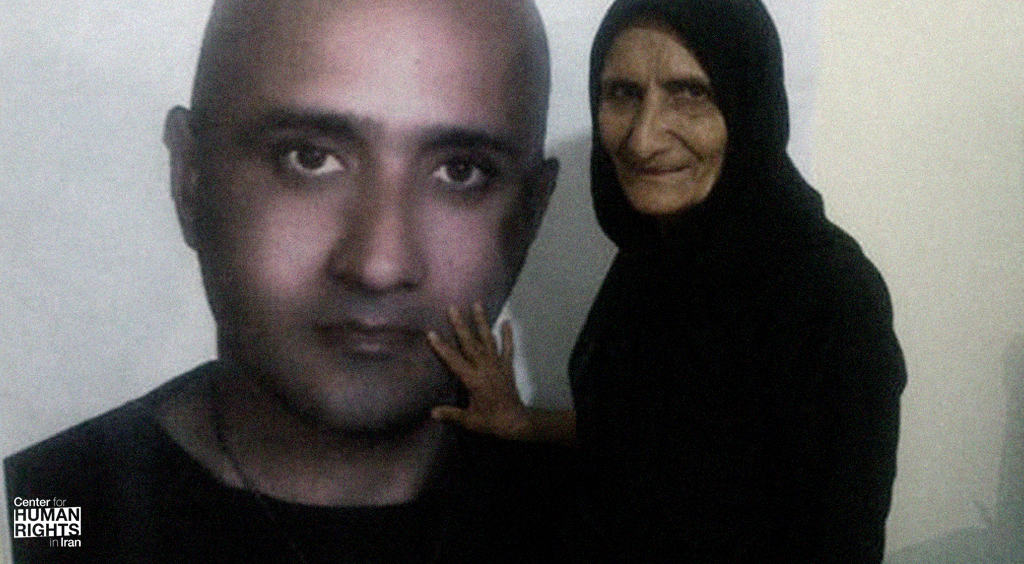Source: iranhumanrights.org

The right to mourn is a human right, yet totalitarian regimes have long tried to deny this right to families who’ve lost loved ones from state oppression. Public mourning can expose and embarrass regimes that seek to silence dissent, and the Islamic Republic of Iran is no exception.
In Iran, a well-known example of families being denied the right to mourn can be seen in the state’s enforced ban on those wishing to mourn their loved ones in south Tehran’s Khavaran Cemetery.
Khavaran is the site of mass graves of political prisoners who were executed without due process in the summer of 1988 (Iran’s current president, Ebrahim Raisi, played a direct role in the executions of those prisoners), as well as the resting place of several followers of the persecuted Baha’i faith.
Khavaran cemetery has been damaged and destroyed by the Iranian government several times. Yet the families have been undeterred and continue to visit the site, despite repeated threats from security agents and the possibility of arrest and torture.
Iran’s government has also prevented hospitals and mortuaries from delivering the bodies of executed political prisoners or slain protesters to their families and instead ordered them buried at undisclosed locations. This practice dates to the early 1980s, when families of victims of state violence were not informed about their loved ones’ burial places.
Some executed political prisoners whose bodies were never delivered to their families include Farzad Kamangar, Shirin Alam Hooli, Habibollah Golparipour, as well as Zanyar and Loqman Moradi.
There is also evidence, including in the cases of Hassan Nafar and Gholam Ali Naraki (Keshavarz), that the authorities in the 1980s demanded money in return for the bodies. There have also been reports of similar monetary demands being made to families of victims of the 2009 Green Movement and during the November 2019 protests.
The Iranian government has also denied the right to mourn by burying victims of state oppression without the authorization or presence of their families, as in the city of Kermanshah, where several slain street protesters were secretly buried in December 2019. Or at night, with only a few relatives allowed to attend the burial, as in the case of Gholamreza Khosravi in a cemetery in Isfahan in 2014.
In the aftermath of the November 2019 protests, Manouchehr Bakhtiari described the mistreatment and abuse towards his family during the burial of his son, Pouya Bakhtiari, a protester who was shot and killed by security forces. The family of fellow killed protester Arsham Ebrahimi was meanwhile denied access to his burial.
Navid Afkari, a champion wrestler who was unjustly executed in September 2020, was buried under a heavy security presence at night after his sudden execution. Since then, his family has been harassed for holding gatherings at his gravesite. And in December 2020 his tombstone was smashed to pieces, shortly after his father and brother were detained for questioning.
In fact, the destruction of tombstones belonging to dissidents or religious minorities, such as members of the persecuted Baha’i faith, has been a common occurrence under the Islamic Republic.
Khavaran Cemetery has two sections. One section is the resting place of several political prisoners executed in the 1980s. The corpses were buried in individual graves, but their tombstones have been destroyed by the Iranian government. The other section is a mass grave of untold numbers of political prisoners executed in the summer of 1988.
In April 2021, the International Baha’i Community announced that the Iranian authorities had banned the Baha’is of Tehran from burying their loved ones in a space previously allocated to them in Khavaran Cemetery.
“The Baha’is are now being forced to choose between impossible options,” said a statement from the community. “One is to use the narrow gaps between existing graves to bury their loved ones, while another is to use a mass burial site authorities claim to have recently emptied. This site is known to be the burial place of thousands of political prisoners killed in the early years of the Islamic revolution, as well as at least 50 Baha’is as part of the government’s campaign to systematically persecute Iranian Baha’is for their religious beliefs.”
Iranian agents have also at different times vandalized or smashed the tombstones of Neda Agha Soltan, a slain protester who became a symbol of the Green Movement protests in 2009, as well as Kianush Asa and Mostafa Karimbeigi who were also killed during those protests.
Despite the Islamic Republic’s inhumane policy of denying the right to mourn to families of political prisoners and state repression, families and their supporters have refused to stop honoring their loved ones.
On November 3, 2021, Gohar Eshghi, the mother of Sattar Beheshti, a blogger killed after being tortured in state custody in 2012, was detained for two days as she was on her way to her son’s grave to mark the anniversary of his death and commemorate the hundreds who were killed in the November 2019 nationwide protests.
Meanwhile, the struggle for justice for victims and their families is alive and kicking abroad. In August 2021, a former Iranian judicial official, Hamid Nouri, was tried in Stockholm in a historic trial in connection with his role in the 1988 mass executions.
Then in November, a people’s tribunal began hearing testimonies from dozens of witnesses on the atrocities that were committed against demonstrators and bystanders during the November 2019 protests.
Read this article in Persian
Leave a Reply